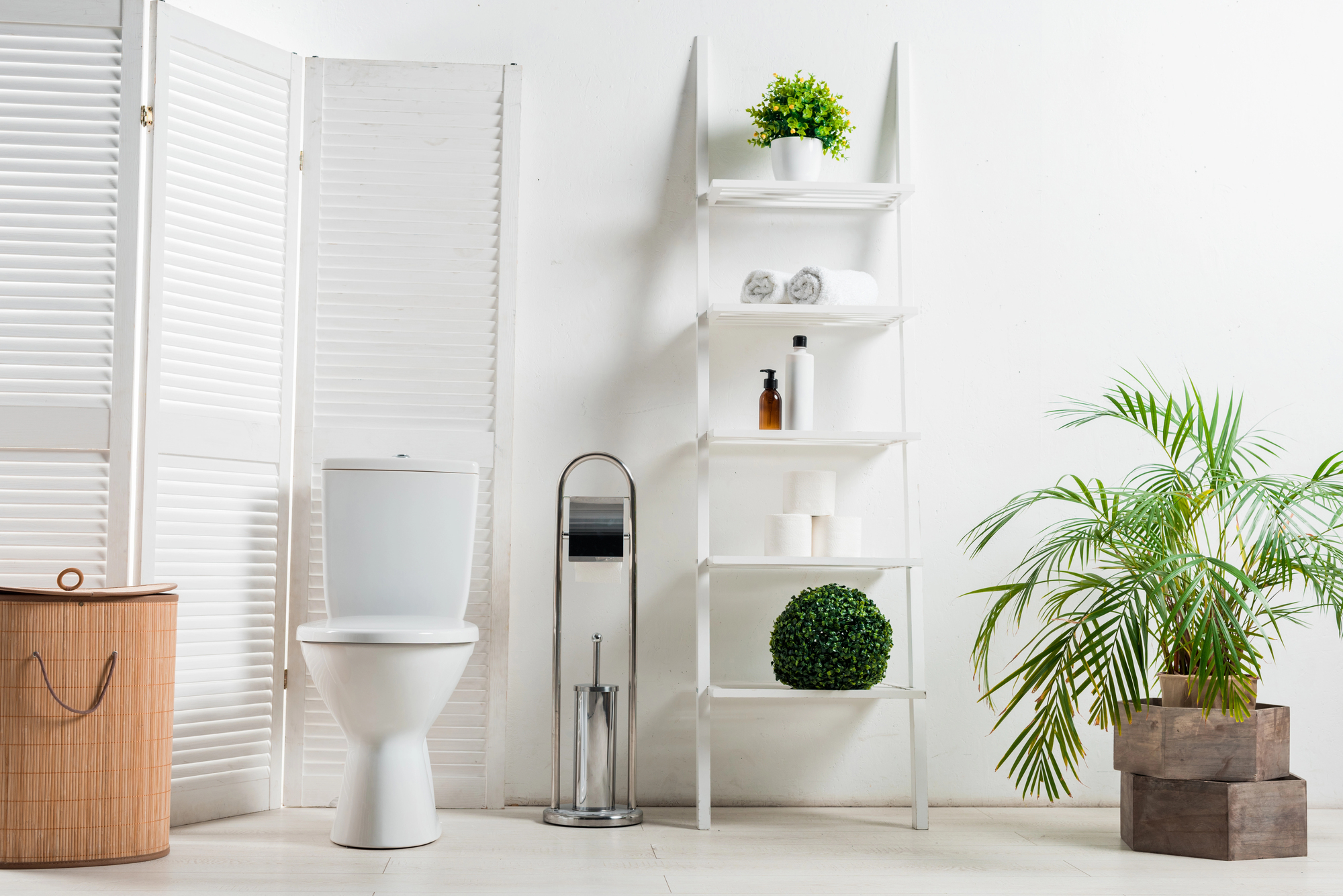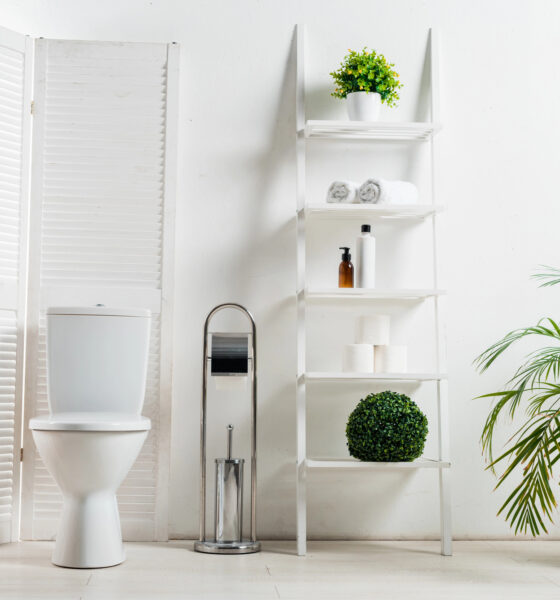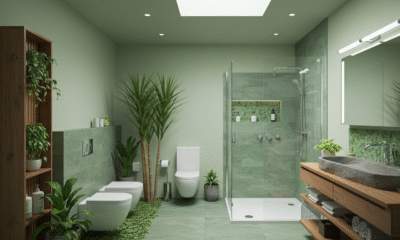

Features
10 Ways to Design an Eco-Friendly Disability Bathroom
Designing an eco-friendly disability bathroom is about creating a space that improves lives while protecting the planet. For people with disabilities, a well-designed bathroom can offer greater independence and safety. It also helps conserve resources and reduce environmental impact when paired with sustainable practices.
You can create a practical and eco-conscious bathroom by making thoughtful design choices. Whether you’re starting a renovation or making small upgrades, these ideas can help you build a space that’s good for people and the planet.
1. Install Water-Saving Fixtures
Adding water-saving fixtures is a simple way to make your bathroom more eco-friendly. Low-flow toilets use much less water per flush compared to standard ones, helping to save resources without affecting performance. Water-efficient showerheads are also a smart upgrade. In fact, installing one could save the average household over 3,700 liters of water each year.
For extra accessibility, consider motion-activated faucets. They’re easy to use for those with mobility challenges and automatically shut off, preventing water from being wasted. These small changes can make a big difference to your water bills and the environment.
2. Use Sustainable Materials
Choosing the right materials can make your bathroom eco-friendly and stylish. Bamboo and cork are excellent flooring options—they’re renewable, naturally slip-resistant, and comfortable to walk on. For tiles, recycled glass or porcelain is a smart choice. They’re durable and sustainable and come in a variety of colors and styles to match your design.
Low-VOC (volatile organic compound) paints are another must—they reduce harmful chemicals in the air, making the bathroom safer for everyone, especially those with allergies or respiratory conditions.
3. Boost Energy Efficiency
Improving energy efficiency is a simple and impactful way to make your bathroom greener. Switch traditional light bulbs for LEDs—they use far less energy, last much longer, and don’t produce as much heat. Install a ventilation fan with a humidity sensor that only runs when needed, keeping the air fresh while saving electricity.
To take it a step further, add natural light. A skylight or larger windows can brighten the space during the day, reducing the need for artificial lighting, cutting energy use, and creating a more welcoming and pleasant atmosphere. Small changes like these can make a big difference in your bathroom’s energy efficiency.
4. Use Accessible Fixtures Wisely
Accessibility features can be eco-friendly, too. Grab bars made from recycled materials like aluminum or stainless steel are strong, durable, and sustainable. Adjustable showerheads are another great option—they make the shower more user-friendly for people of different heights or abilities and often include water-saving settings.
Curbless walk-in showers are a smart choice for accessibility and style. They’re easier to use, have a sleek, modern design, and require fewer materials, like shower doors or curtains, which helps reduce waste. With these thoughtful choices, you can create an inclusive and environmentally conscious bathroom.
5. Focus On Long-Lasting Design
Choosing durable features for your bathroom helps reduce waste and ensures it stays functional for years. Stainless steel grab bars are a great example—they resist corrosion and last a long time, making them a reliable choice. Reclaimed wood cabinets are another smart option. They’re sustainable, full of character, and keep reusable materials out of landfills.
For the floors, textured porcelain tiles are a fantastic choice. They’re non-slip, tough, and can withstand daily use without needing frequent replacements. While high-quality materials may cost more upfront, they save money and resources over time by lasting longer and requiring fewer repairs or replacements. It’s an investment that pays off in the long run.
6. Add Green Touches
Small details can make a big difference in creating an eco-friendly and inviting bathroom. Start with organic cotton towels—they’re made without harmful chemicals and feel soft and luxurious. Swap single-use plastic bottles for biodegradable soaps and shampoo and store them in refillable dispensers to reduce waste.
Adding plants is another simple way to make your bathroom feel greener. Aloe vera, snake plants, and peace lilies are great choices because they thrive in humid environments, purify the air, and bring a calming, spa-like vibe to the space. These little touches combine sustainability with style and comfort.
7. Try a Smart Shower System
Smart showers are a great way to combine sustainability with accessibility. These systems let you set precise water temperatures and timers, helping to cut down on water and energy waste. Many models offer advanced features like smartphone or voice control, making them especially helpful for people with mobility challenges.
8. Include Easy-to-Use Storage
Accessible storage helps keep the bathroom functional, safe, and organized for everyone. Look for cabinets made from reclaimed or sustainably sourced wood to add an eco-friendly touch. Pull-out drawers and adjustable shelving are great features that make reaching and storing items easier for people of all abilities.
By keeping clutter to a minimum, accessible storage makes the bathroom safer and easier to navigate. It’s a simple way to combine sustainability with practicality.
9. Install a Dual-Flush Toilet
Bathrooms account for over 45% of water use in the average American home, and toilets alone make up nearly 27%. Installing a dual-flush toilet is a simple and effective way to reduce water waste. These toilets offer two flush options: a low-volume flush for liquids and a higher-volume flush for solids.
This flexibility can significantly reduce water usage over time, especially in households with multiple users. Dual-flush toilets are also easy to operate, making them ideal for accessible bathrooms. Combining water-saving features with practicality makes them a smart, sustainable choice for any home.
10. Plan for the Future
Future-proofing your bathroom ensures it stays functional as needs change. Universal design features, like wide doorways, curbless showers, and adjustable fixtures, make the space accessible for people of all ages and abilities. These elements create a bathroom that’s easy to use now and adaptable for the future. A flexible layout can also help you avoid costly renovations later, saving materials and money.
The Impact of an Eco-Friendly Disability Bathroom
An eco-friendly disability bathroom improves lives and supports the planet. By incorporating sustainable materials, water-saving fixtures, and durable designs, you create a space that’s safe, comfortable, and environmentally conscious. Small, thoughtful changes can make a big difference for the environment and the people who rely on the space every day.


 Environment10 months ago
Environment10 months agoAre Polymer Banknotes: an Eco-Friendly Trend or a Groundswell?

 Environment11 months ago
Environment11 months agoEco-Friendly Home Improvements: Top 7 Upgrades for 2025

 Features9 months ago
Features9 months agoEco-Friendly Cryptocurrencies: Sustainable Investment Choices

 Features10 months ago
Features10 months agoEco-Friendly Crypto Traders Must Find the Right Exchange
























